Tobacco production smoke
2005/05/01 Galarraga Aiestaran, Ana - Elhuyar Zientzia Iturria: Elhuyar aldizkaria
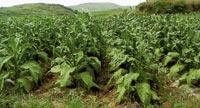
Cigars, in fact, are made of crushed tobacco leaves. The producers mix different types of tobacco to suit the tastes of smokers, so the places where tobacco is grown are specialized in one or another type. In addition, the climate, the characteristics of the soil, the cultivation techniques and the culture and transformation technology of tobacco leaves have a direct impact on tobacco quality.
The cultivation of tobacco is, in general, intensive. They grow as if it were an annual plant, although in the tropics it is greater than a year. However, the plant should be preserved throughout the year to obtain good quality leaves.
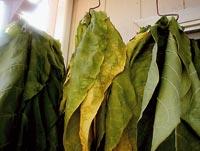
The stem can reach two meters and before reaching the maximum length begins to bloom the end. However, when the flowers grow, the leaves grow less and lose quality. To avoid it, the flowers are removed. The plant then produces lateral buds which must also be eliminated to avoid losses in performance.
When the color of the leaves changes from green to pale yellow, it means they are ripe and ready to be picked up. However, they are collected before or after depending on the type of tobacco desired. In fact, the composition of the leaves varies with time: the glucids and the nitrogenous compounds go from the leaves to the stem, but the nitrogenous molecules migrate much faster than others. Therefore, to decide when to pick up the leaves take into account their chemical composition.
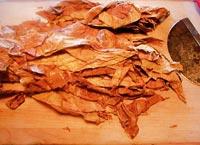
Once collected, the leaves should be cured. By maturing they lose water and at the same time biochemical processes continue. Consequently, the composition changes. On the other hand, there are various drying pathways, either by means of artificial heat, open sky, under the sun or by means of an extension in the soil, which also influences the composition. Finally, it is recommended that the humidity of tobacco be between 18 and 26%. If the leaves have more water, they are fermented and if they have less they are broken.
From leaf to cigar
Although most tobacco is used for the manufacture of cigarettes, other products such as cigars, tobacco for pipe roasting, tobacco powder, chewing tobacco and some pharmaceutical products are also produced, but are not consumed as much as cigars.
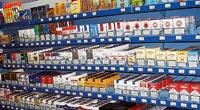
Different types of tobacco are mixed to make cigarettes. The crushed tobacco is collected in asar paper, a role that has great influence on the burning of tobacco. Paper is made from cellulose pulp from vegetable tissues, such as flax or cellulose from wood, and may contain more or less pores. This implies that air enters more or less, which influences the combustion and the smoke that is generated.
In most cases, a cigarette filter is placed. The filter is made of cellulose acetate and its function is to retain tar and nicotine. The amount of tar and nicotine it retains is related to ventilation. The filter is packed with water-repellent paper, with pores and holes. The air that enters through them dilutes the smoke. In this way, the smoker reduces the amount of nicotine, tar and carbon monoxide.
Not everything is tobacco
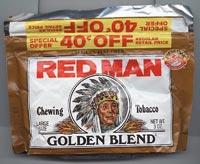
Tobacco collected on paper has other components. According to various sources, the substances added to tobacco can be six thousand. One knows if they will be so many, but there is no doubt that additives are very important to give smell and flavor to the cigarette.
For example, in order to preserve the degree of humidity and give a pleasant smell, salsas are added to tobacco. Each type of cigar has its origin in moisturizing substances, sugars, cocoa, liquorice and perfumes dissolved in water. The salsa can represent 10% of the tobacco, but the producers are not required to declare which ingredients and how much of each of them use.
Other substances used to aromatize are added dissolved in alcohol. In general they are not used in large quantities, except in the mint cigars that carry about 4% of menthol.
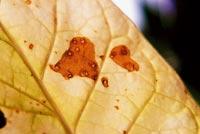
Many report that manufacturers of cigarettes also add ammonia to tobacco. Apparently, ammonia causes a greater release of nicotine, which increases the dependency of the smoker. However, tobacco itself contains ammonia, and substances that are produced by reacting ammonia and sugar give an aroma to cigarette smoke.
Therefore, tobacco is only one of the components of the cigarette, the main yes but not the only one.




